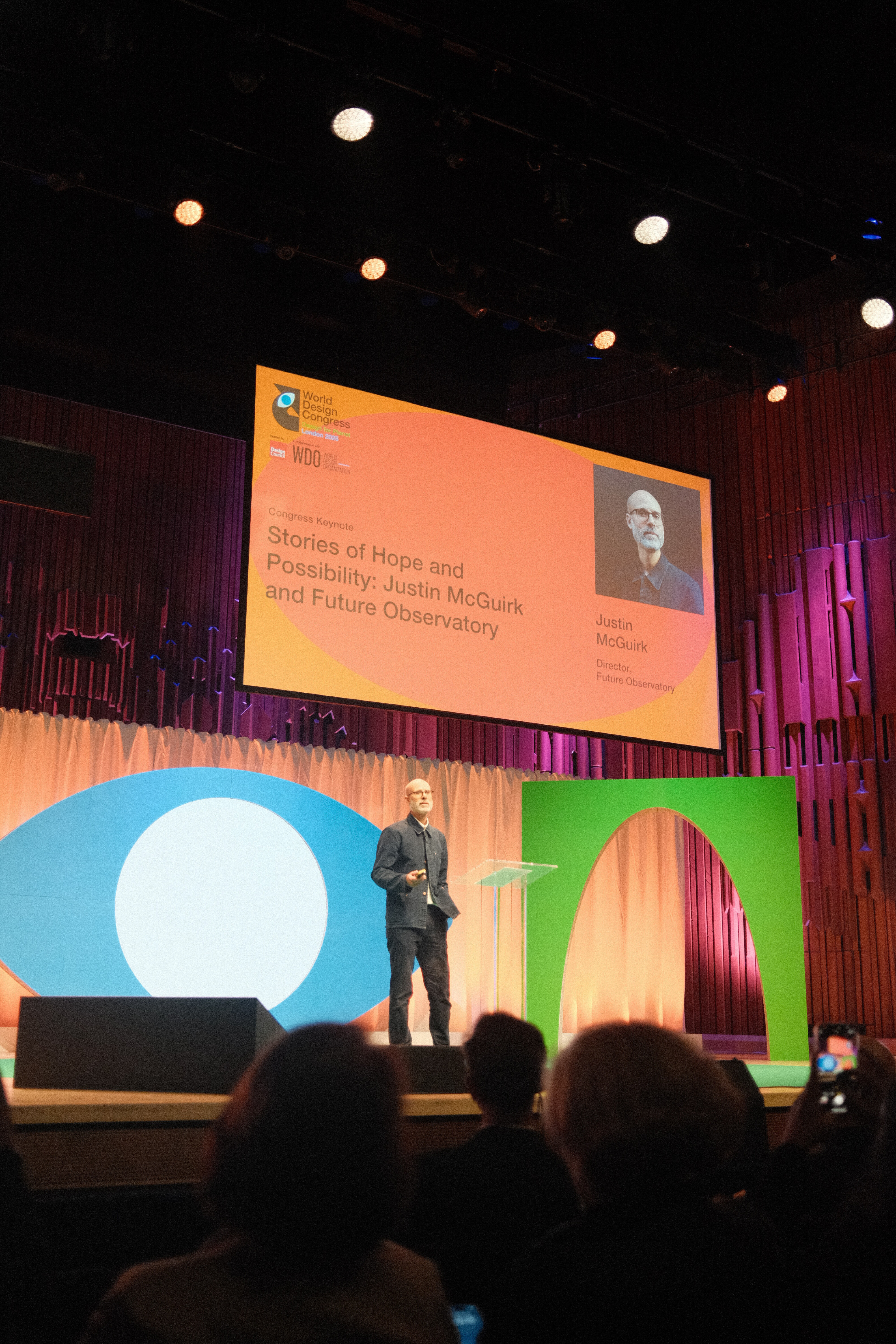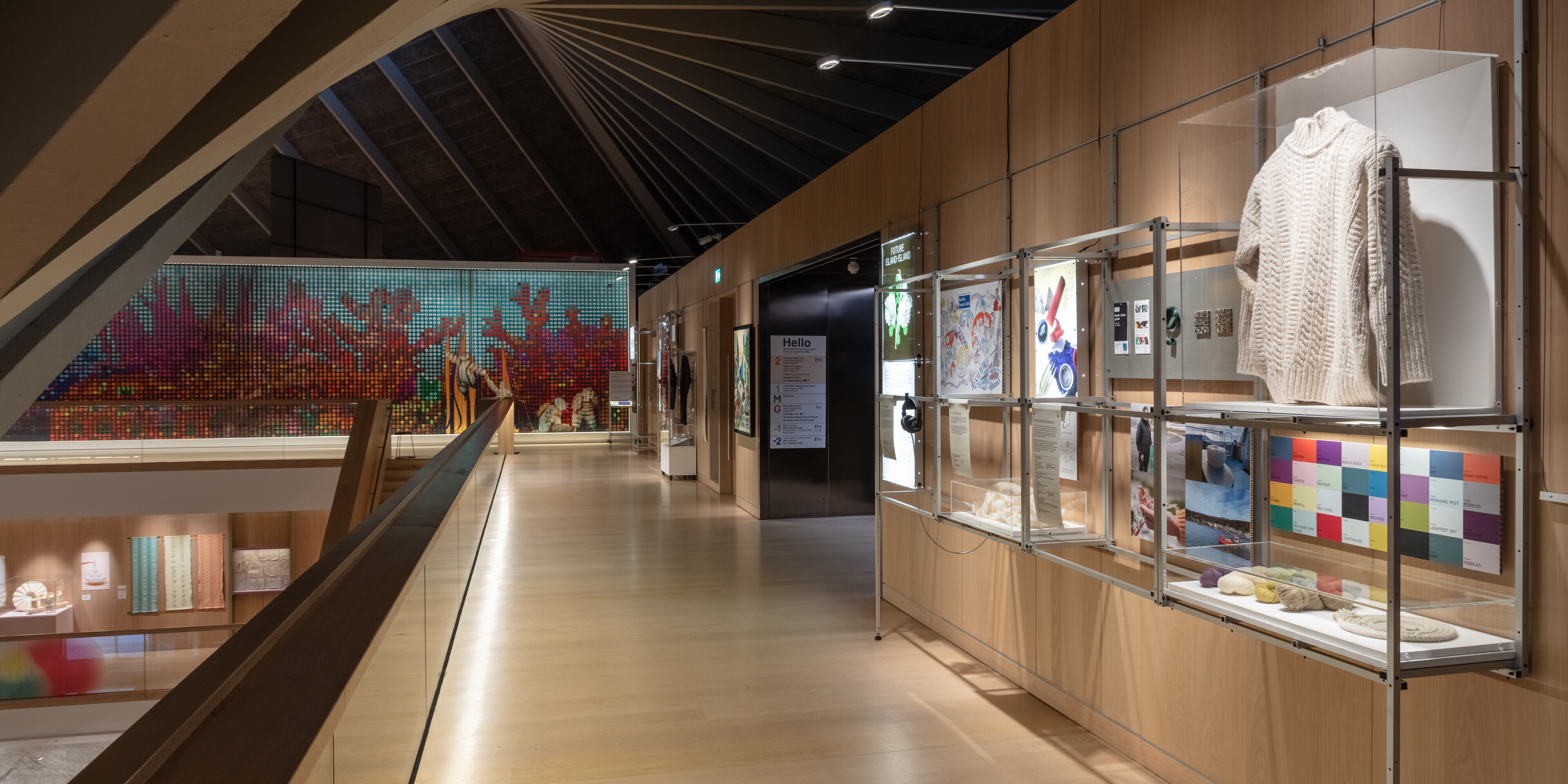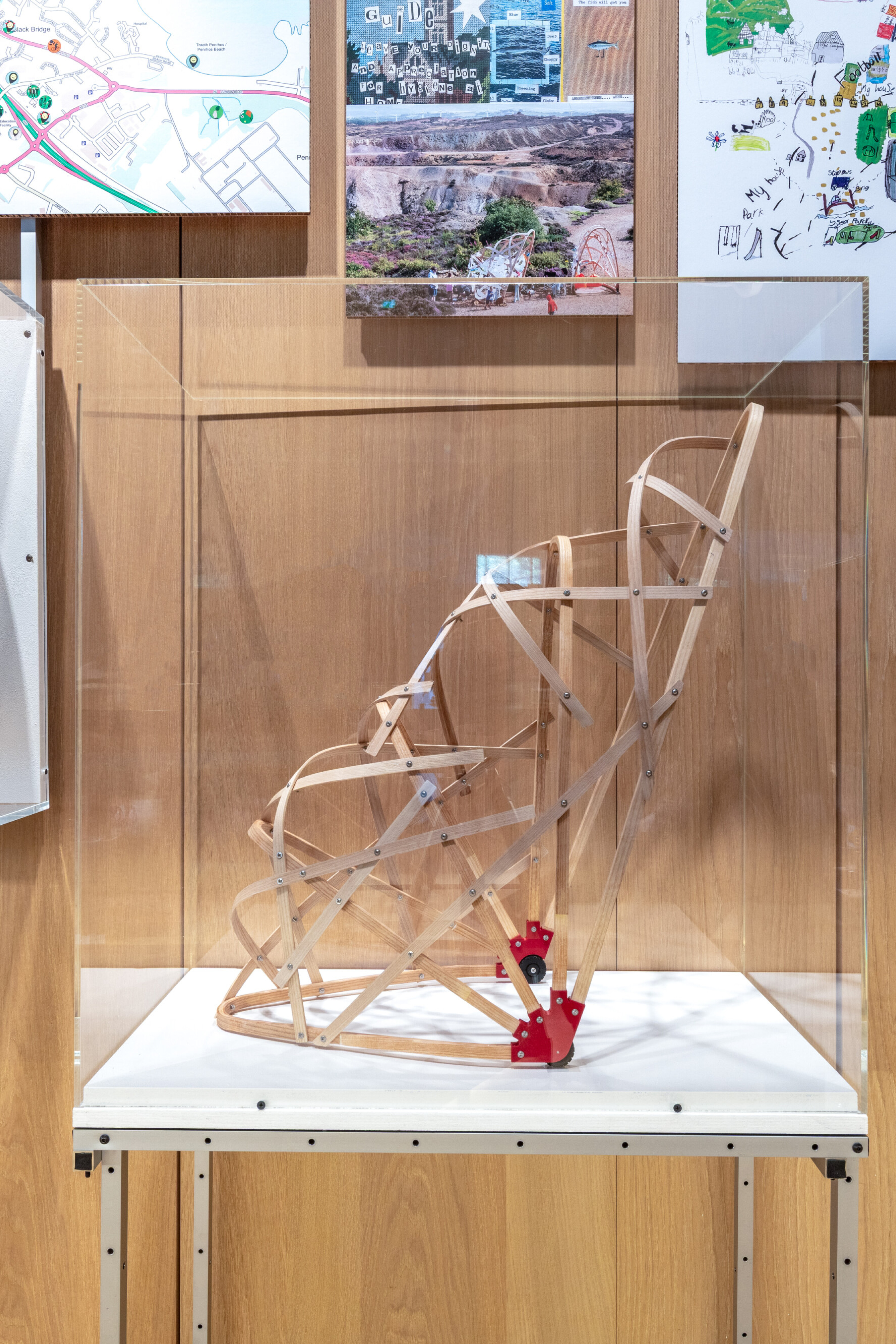Earlier this week I along with other colleagues from across AHRC spent two inspiring days at World Design Congress which this year was hosted by the Design Council in London.
Uniting under the Design Council’s flagship Design for Planet - Design Council theme, World Design Congress demonstrated the different ways design can be harnessed as a key industry in addressing the climate crisis and the move to net zero.
The event attracted designers, business leaders, policymakers, educators and researchers from all over the globe to explore a range of powerful themes designed to inspire, challenge and mobilise for action.
With speakers ranging from musician and activist Brian Eno to Earthshot Prize winner Charlot Magayi, the event illustrated the central role design plays and needs to play in addressing challenges and opportunities including the green transition and net zero.
This is emphasised by the Design Council’s mission to upskill 1 million designers for the green transition.
In his closing address to Congress, Minister Chris Bryant summed up the message of all the speakers by addressing the importance of design in shaping the future.
This is why AHRC remains committed to investing in design research around the theme of net zero.

The World Design Congress culminated in the annual World Design Congress President's Drinks Reception hosted at the Design Museum to coincide with the opening of the Future Observatory: Tools for Transition exhibition.
This exhibition showcases the work of the four Green Transition Ecosystems funded as part of AHRC’s Future Observatory: Design the Green Transition programme.
The year-long exhibition highlights how designers are responding to climate change through ongoing research, rather than finished products, and emphasises the crucial role of design in the green transition.
During the event, AHRC’s Executive Chair, Christopher Smith, and Future Observatory Director, Justin McGuirk, announced that AHRC have committed to funding a second phase of the programme to run from October 2025 to March 2028.

The second phase of the programme, supported by a £34 million investment, will continue to support growth and the UK’s transition to net zero through the scaling up of design interventions and engaging diverse public audiences with the power of design through our flagship partnership with the Design Museum.
In the second phase, Future Observatory will continue to act as both a coordination hub for the nationwide programme, as well as a research department within the museum.
It will continue to redefine what a museum can be: a place not solely focused on the past or the present but one that can help shape the future.
In Phase 1 Future Observatory has delivered a programme of exhibitions, displays, residencies, events and publications, including a dedicated Future Observatory Gallery at the museum.
As the UK’s first design research and innovation engagement centre, Future Observatory also directly supports and funds multidisciplinary, multi-scale design research.
This includes:
16 design researchers in residence
5 design ecosystem fellowships
2 low-carbon housing fellowships
6 DCMS cultural policy fellowships
and 4 More Than Human fellowships.
The Green Transition Ecosystem projects featured within the Tools for Transition exhibition have also secured further funding.
These are large-scale projects that focus on translating the best design-led research into real-world application across a range of sectors, including healthcare, circular economy, housing and planning.
The four projects are:
Design HOPES led by Professor Paul Rodgers (University of Strathclyde) and Professor Mel Woods (University of Dundee)
Future Island-Island led by Professor Justin Magee (Ulster University) and also Dr Clare Mulholland (Queen’s University Belfast) in phase two
Public Map Platform led by Professor Flora Samuel (University of Cambridge)
Transforming existing housing with, and for, communities led by Professor Joanne Patterson (Cardiff University)
In their second phase, the GTEs will continue to build on the impacts and benefits delivered in the first phase of their funding.
Impacts so far have included:
Design Hopes’ reusable headwear made from a sustainable, plant-based material for hospital staff that is helping to reduce waste in the NHS while also improving patients’ experience.
Future Island-Island has been working with coastal communities in Northern Ireland to recycle and reuse waste material collected during beach cleans, and use 3D printing to print and repair equipment, showcasing how these approaches can be used to improve the environmental sustainability and reduce costs for communities and small businesses
Public Map Platform will soon launch their interactive mapping tool which could transform the UK planning system by allowing communities to help shape how developments are brought forward for their areas. The new tool uses economic, cultural, social and environmental data provided by communities, which could ensure a more evidence-based, digital approach to planning.
and the Transforming Housing and Homes project is working with partners in Swansea and Bristol to explore how adaptations to 1.4 million council-built houses across the UK could cut energy bills, reduce carbon emissions and improve the health and wellbeing of their occupants.
Phase two of the Future Observatory programme will also include a new funding opportunity.
Design Generators will seek to generate new arts and humanities-based approaches and methodologies that harness design to address environmental sustainability, decarbonisation, circular economies, policy design and/or regenerative practices.
The first of two rounds will open in November 2025 so watch this space for future updates.
